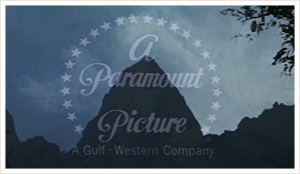The Silence Of The Lambs – 20th Anniversary
February 15, 2021 7 Comments
The Silence Of The Lamb (1991)
(30th Anniversary Review)
Dir: Jonathan Demme With: Jodie Foster, Anthony Hopkins, Scott Glenn
Yes, it has been 30 years since Antony Hopkins appeared for the first time as Dr Hannibal Lecter on Valentine’s day (not your typical date movie, is it?).
Back in 1991 it defied expectations by winning the “Big 5” Oscars (and a year after its release too!!), best film, director, screenplay, leading actor and actress: it was only the third film in movie history to do so (after it happened one night and One flew over the cuckoos’nest) and even more groundbreaking, it was the first horror/thriller to win for best film.
30 years later, “The Silence of the Lambs” is still a preposterous film, camp as hell, absurdly over the top in its premise and its execution and yet it holds a place in American Movie History as a ‘modern classic’.
With Hannibal (incidentally a character that appears for only 16 minutes in the film) Hopkins became a star (yes, I know… he was “good” well before this, but oly few really knew him from Elephant Man for example) and created an icon, which lived on throughout (or despite) its three sequels: Hannibal, Red Dragon (which in fact this is both a prequel and a remake of Micheal Mann’s Manhunter) and the very forgettable Hannibal Rising (another prequel, Hopkins-free). And that’s without mentioning the recent TV Series (dark as hell… and probably too weird to survive past 3 season… though I quite liked it).
All of a sudden, we all started to love the bad guy, or at least we loved hating him: we loved the fact that he ate the despicable Dr Chilton at the end film (“I have an old friend for dinner”, is probably one of the most classic final lines of any film, up there with “Nobody’s perfect” in Some Like It Hot), we loved those over the top lines of dialogue, those chilling looks, his refined taste, his Southern English accent… And somehow we (or at least I) just wanted him to get away, despite the fact that we know he’s not just bad… but he likes to eat his victims.
This is certainly nothing new, Hitchcock had done it 30 years earlier in Psycho, but arguably this is the film that started off the whole trend of “serial killers” with whom we identify, the whole puzzle solving murder mysteries and the mixture of dark horror and funny one liners. Surely without Silence of the lambs and its Hannibal the Cannibal character, there would have been no Se7en by David Fincher, possibly no Dexter on TV and probably not even Jigsaw from the Saw franchise… And God knows how many others.
However what keeps this film anchored to the ground, despite the absurd (but obviously very effective) performance by Anthony Hopkins, is a combination of a very controlled and calculated direction by Jonathan Demme and the presence of Jodie Forster, who somehow counterbalances the campness of her screen partner.
Jonathan Demme, uses every little (subtle and non-subtle) trick in the book to suck in his viewers and bring them as close possible to the screen. He films the most intimate dialogue sequences between Hannibal and Clarice in extreme close ups, and has them delivering their lines straight to camera, as if they were confessing their inner secrets directly to us. As he does so, he drops the level of any other sound away from the central conversation, he kills the music and as as he slowly zooms in closer and closer into their faces, he very subtly pushes the bars of the prison cells that separate them away from each other until they actually disappear at the edge of frames, thus bringing the two characters even closer to each other.
It’s very effective trick and it works wonderfully!
He even uses the powerful the editing in order to deceive us to believe one thing instead of another. That famous sequence where we are lead to believe that the police is about to break into killer’s house and save the day, only to reveal that in fact they’re all in the wrong place: a trick have been copied over and over again in countless movies and TV CSI-like shows (and even the great 24) ever since, but never worked as well as they did here: it is an incredibly manipulative but just as accomplished moment.
Watching it tonight, I find so many clichés of the genre in it, but only because most films that came after copied so many of its elements. If the film has aged a bit it’s just because everything that came afterwards drew something from it. It may not be a perfect film and it’s very debatable whether it did merit all those Oscars, but it definitely deserves its cult status and its place in history for paving the way for a new genre of thrillers and many brainer and more stylish horrors film.
8.5/10
Check out the review of another modern Classic:










